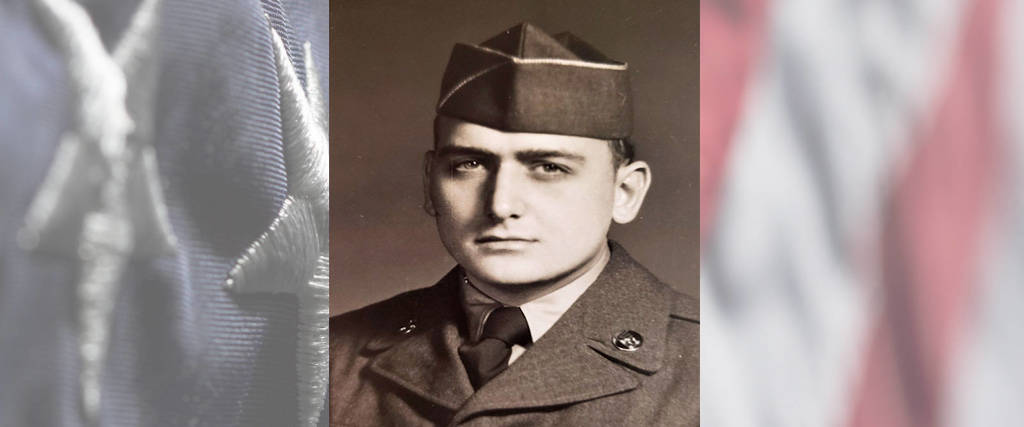U.S. Army Korean War Chicago, IL Flight date: October, 2019
By David Koziol, Honor Flight Chicago Veteran Interviews Volunteer
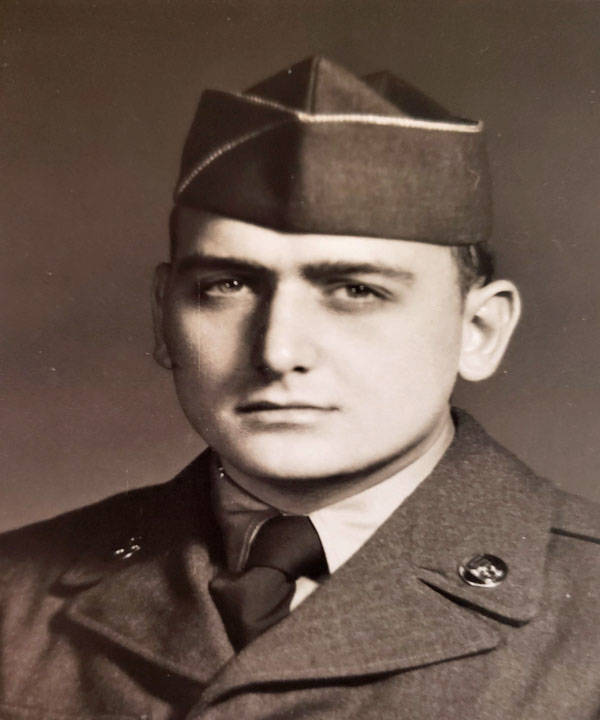
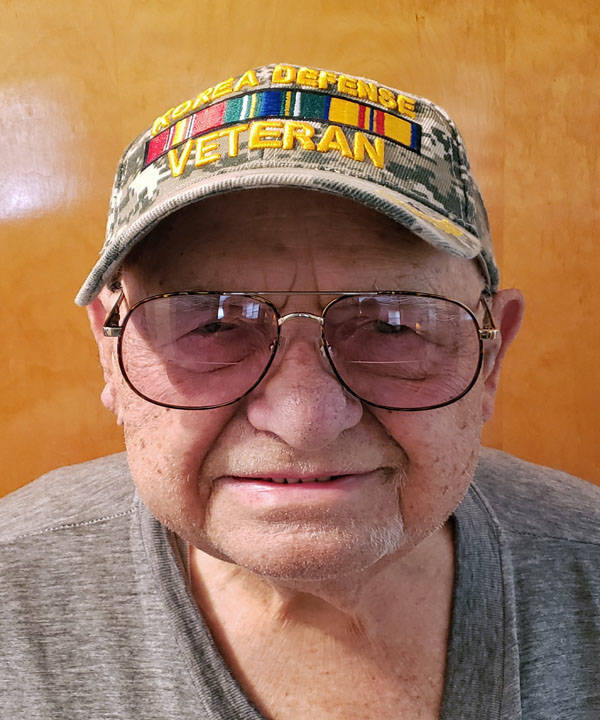
John Piworski was born in Chicago in July, 1930, and was raised with his sister, Celia, in the south Chicago neighborhood of Gage Park. He is the son of John and Lillian Piworski and is of Polish descent. He graduated from Tilden High School in 1948. Soon after graduation, he became an electrician apprentice at Electro-Motive in La Grange, Illinois. He was working there when he received his draft notice and was subsequently inducted into the Army in November, 1951.
Upon induction, he reported to Ft. Sheridan, Illinois, with John stating it was “mostly for shots.” After a short while there, he was on to Ft. Knox, Kentucky. This is where John found out he would be a “tanker” and not an infantryman. He attended “tanker school” there, training on armored vehicles and Sherman tanks for about three months.
After his tank training, he was sent to the State of Washington for additional training and to eventually transport overseas. He departed around September, 1952, on board a troop transport ship en route to Japan. It took the transport ship about 11 days to reach Japan. John described, “The ship had to travel in a zig-zag pattern to avoid detection.” Upon arriving in Yokohama, Japan, he disembarked for a short stay before finally being transported to Korea.
John vividly remembers his trip from Japan to Korea aboard the USS Black. “Believe me, the name fit the ship. There was no room, you had to stand up and eat. Everything on the ship was sliding back and forth.” When it reached the Korean harbor, the men had to climb down netting into small landing craft and were then ferried to the mainland. The men were loaded into trucks and transported inland to base camps along the 38th parallel.
John remembers seeing the signs of war soon after landing in Korea. He says, “We passed through one town that was completely leveled. The only thing sticking up though the debris was the town’s bank vault.” Many areas along the 38th parallel were heavily damaged. John noticed that in some areas, “Every tree looked like toothpicks from the effects of air or artillery fire.” After arrival at base camp, John learned he would be assigned to Company C, 89th Tank Battalion attached to the 25th Infantry Division. This company of the 89th Tank Battalion aka “Charlie Company” was is need of a radio repairman.
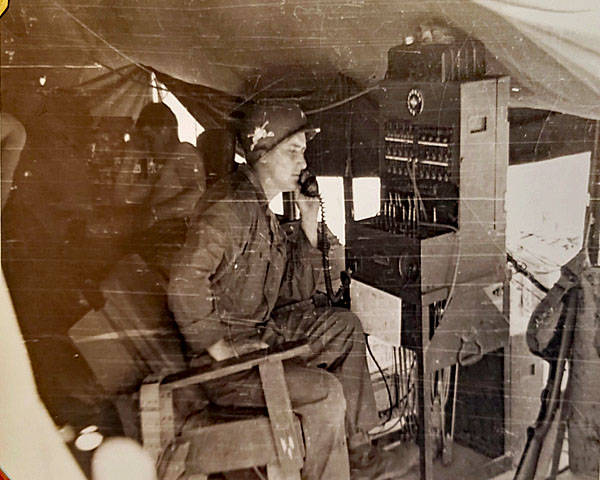
John, being an electrician apprentice, was an obvious choice for this job; however, he knew nothing about radio repair. He was sent to radio repair “school” which was held out of the back of a 2 1⁄2 ton truck. Upon completion of the training, he was transported to “Charlie Company” for assignment. There was no additional on-the-job training, as the man he replaced left Korea for home the very next day. After his assignment to the Company, John’s radio call sign was One-Zero-Mike, and he serviced all the radios in the Company.
John served just short of a year in Korea as part of “Charlie Company” under the command of Captain Arthur L. Bakewell, a West Point graduate. His men called him the “Old Man” and “Well Done” and John got to know him well. While in Korea, “Charlie Company” men lived in temporary eight-foot-deep bunkers reinforced with railroad ties. When not on the move with their Sherman tanks, they called these bunkers home. They occupied numerous pre-dug bunkers and John remembers, “The infantryman had to dig us about six new bunker locations while I was there. We had to move quite often up, down, and along the 38th parallel in support of the infantry division.”
Since John was trained as a tanker at Ft. Knox, he was knowledgeable about the Sherman tank. John said, “Everyone in the tank knew everyone else’s job.” In March of 1953, John was promoted to Sergeant by Captain Bakewell, making him the tank commander. The Company did nothing without orders, and when they moved, mostly in daylight, it was to support the infantry. The terrain in John’s section of Korea was like the state of Colorado. It was sometimes very mountainous and forested, with winding unpaved roads. John remembers a fellow tanker getting his Sherman tank stuck. He said, “It took three to four other tanks to pull it out of the mud.”
One evening, John captured a North Korean soldier. “He was nosing around my tank. I came out of my bunker with my .45 (pistol) and told him to put his hands up! The other men were yelling at me, Don’t shoot him, John!” John was told that G-3 (operations staff) would want him, so he was turned over to the military police. It turned out the soldier was a deserter and was very cooperative.
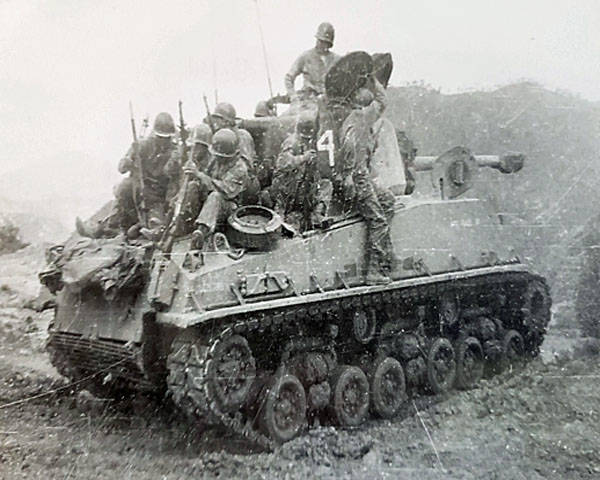
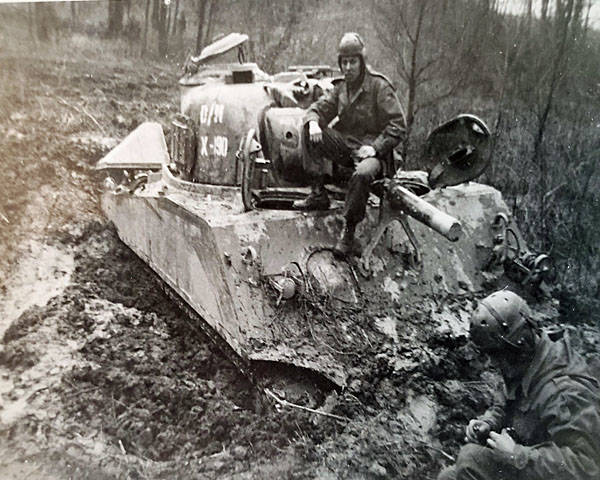
On another occasion, during an artillery attack against the Company, John’s bunker was hit twice. He came out of it without a scratch; others were not as lucky. The “Old Man” asked him how was that possible and John responded, “Somebody up there likes me.” John’s favorite Catholic Saint is Padre Pio and he would often pray to him, requesting Lord save me. This seems to have worked out well for John.
Everyday life for the men on the line was not all that pleasant either. Their food was supplied to them in tin cans. Since everyone has a favorite, like bacon or hot dogs, the cans were placed upside down before serving. That way the contents were unknown, and the men had to eat what they picked. Occasionally, a food truck would make it to the Company and the quality of those meals was better. On special occasions, some of the men would receive a package from home containing Campbell’s soups. John said they would dump all the cans together in a large pot and share.
During the rainy season when the tanks were less active, men would go into nearby towns in search of “water.” They would come back with the “water” which was 3.2 percent alcohol beer. They would sometimes celebrate birthdays by consuming beer at impromptu parties in the bunkers. Sometimes it wasn’t fun when a rat or two would show up to join the party. The rats were plentiful, and John would often hear them in the bunker jumping from puddle to puddle.
During John’s time on the line in Korea, his mother Lillian passed away. Captain Bakewell was the one who told him the sad news. He then issued John a pass, supplied him with a jeep and driver, and told him to get to the nearest town and call home. The conditions on the way to the nearby town were bad and he was unable to make that call home. John, only 20-years-old at the time, remembers crying for two to three days.
“Charlie Company” got into combat while supporting the infantry. This support was sometimes for the Turkish infantry, which John said were excellent soldiers. Other times it was for the Republic of Korea infantry or for the support of the American troopers of the 25th Infantry Division. During John’s time in Korea, this combat was almost always direct fire into enemy artillery positions. The enemy would most often be up in the hills, and when they fired, we could identify their position and return fire. John said he only saw one enemy tank “It was late in my tour, and it was a Russian T-34. It was used by the Chinese against the Americans; it had been disabled and abandoned on the side of the road.”
During his time in Korea, John’s talent for playing the accordion was revealed. He had to entertain some officers, who John recalls, were mostly from New York and Texas. He entertained them with a series of Polish Polka songs!
John did get some actual R & R (rest & relaxation) while overseas. He was once flown by DC-3 back to Japan during his tour of duty. Upon arrival, they asked him what he wanted to eat. He replied, “Do you have steak?” The cook said, “Yes.” John thinking about the post-WWII conditions of Japan worriedly asked, “Where do you get your steak?” The cook’s reply was “Venezuela” and John was able to enjoy his steak.
By late July, 1953, John had earned enough combat points to be rotated home. Captain Bakewell made sure there was no delay and by mid-August, John was honorably discharged at Camp Crowder, Missouri. His service awards include the National Defense Service Medal, the Korean Service Medal with two Bronze Campaign Service Stars, the United Nations Korean Service Medal, the Republic of Korea War Service Medal and one Overseas Service Bar.
John returned home to his father and sister who lived in the Garfield Ridge neighborhood of Chicago. He also quickly gained employment as an electrician. His sister introduced him to her friend, Gertrude, from the next block. Gertrude did not have a car, so John volunteered to drive her to church on Sundays. Their friendship grew and culminated in marriage in 1954. John and Gertrude purchased a home in Garfield Ridge 65 years ago and still reside there today. They raised their two children, James and Carol, in that home. They are the proud grandparents of four and boast of a new great-granddaughter. If you see a man in Garfield Ridge sitting on his front porch wearing a Korean War Veteran cap, it may well be John.



